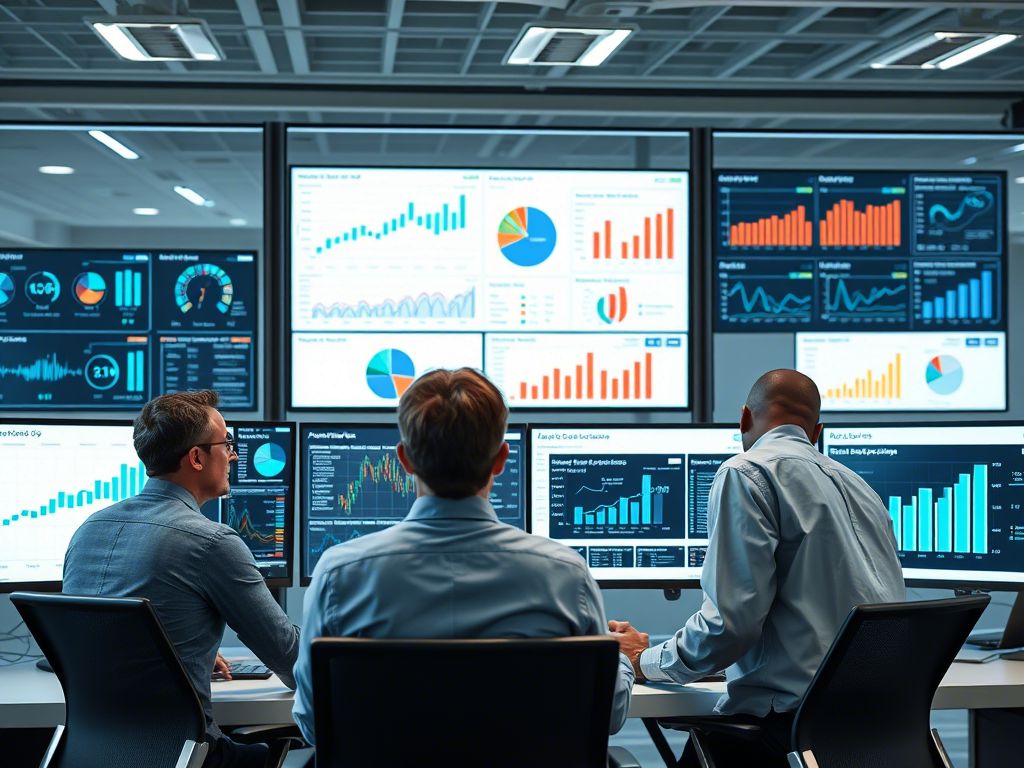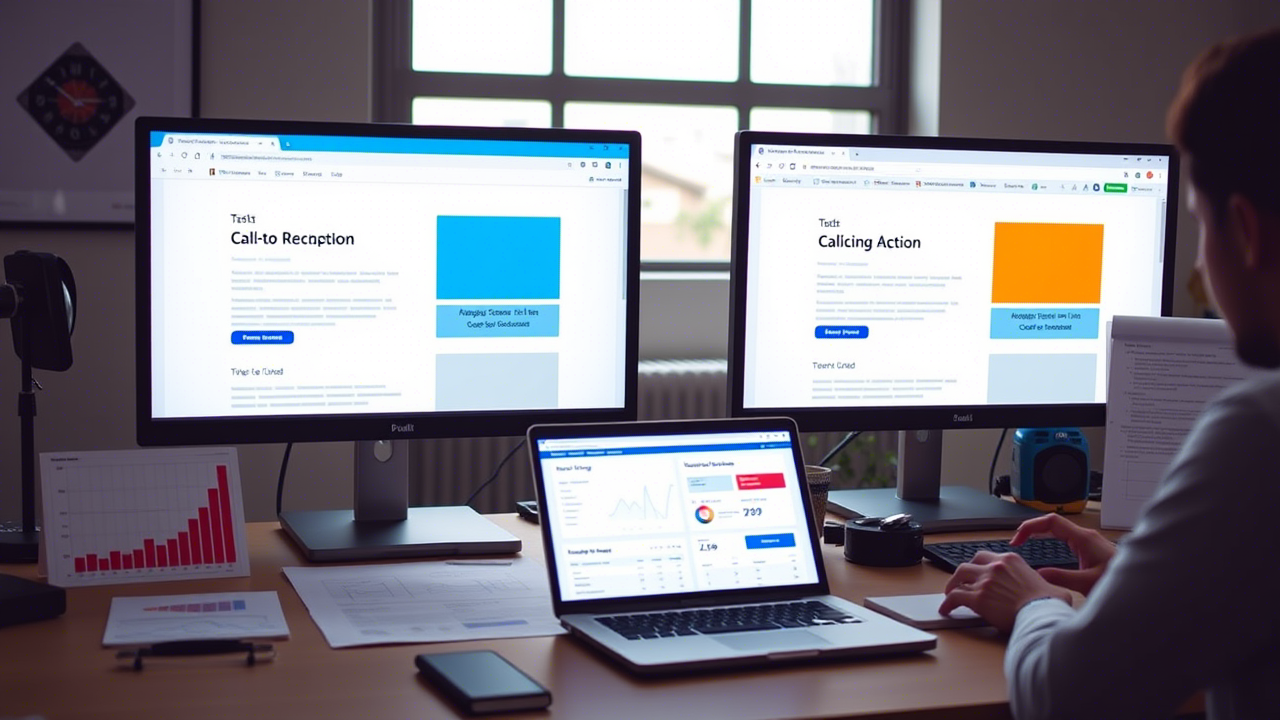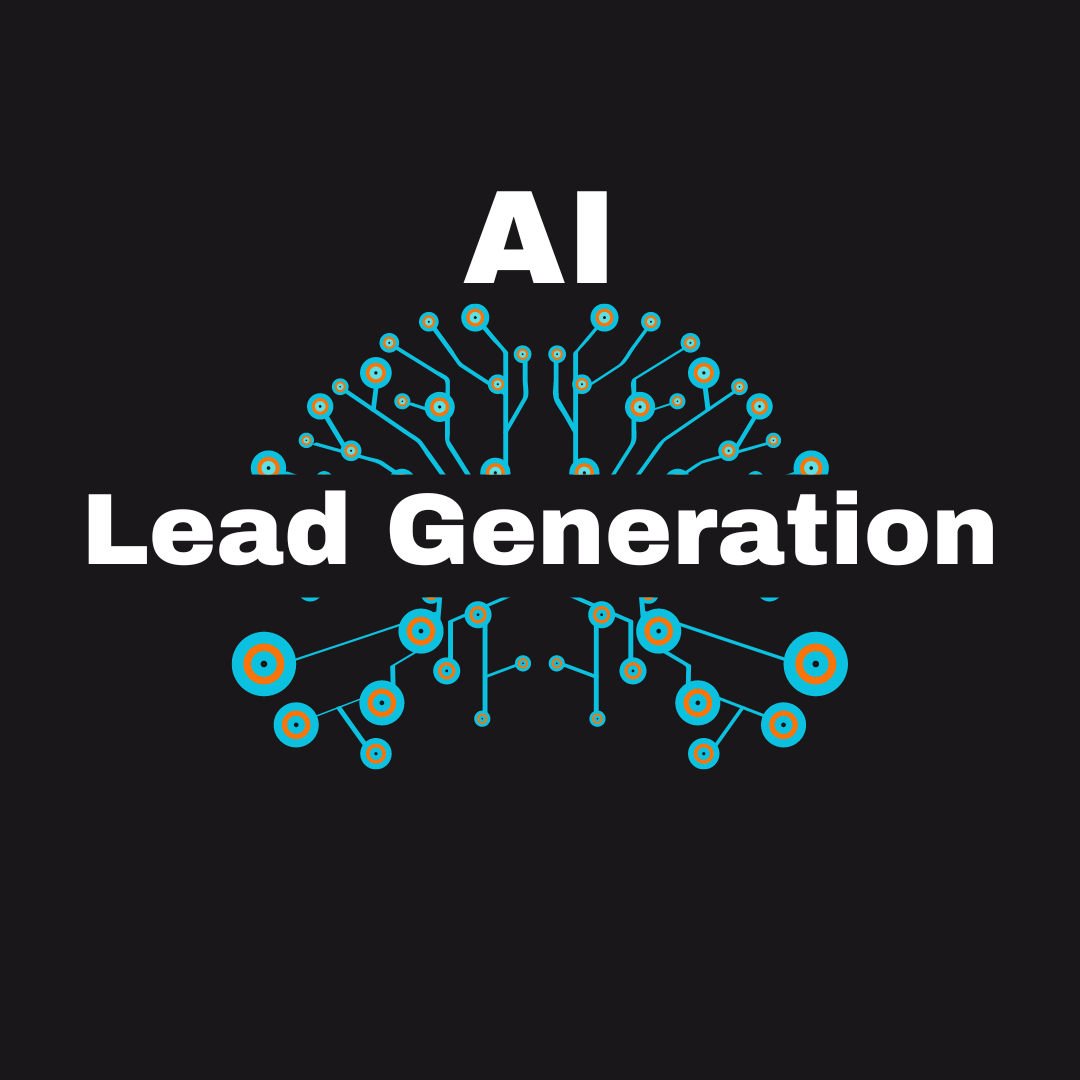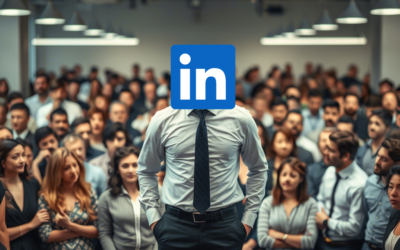How AI Optimizes Landing Pages for Better Conversions
Key Takeaways
- AI creates personalized content for each visitor based on their data
- Automated A/B testing finds winning designs without manual work
- Dynamic content changes in real-time based on how visitors behave
- Smart traffic routing sends visitors to the page version most likely to convert them
- AI chatbots answer questions 24/7 and gather valuable visitor insights
- Predictive analytics shows which visitors are most likely to buy
- Performance optimization makes pages load faster on all devices
- The best AI tools work together to create a complete optimization system
AI-Powered Personalized Content Generation
Landing pages used to be one-size-fits-all. Every visitor saw the exact same headline, images, and text. But that’s not how people work! Different visitors care about different things. AI fixes this problem by creating personalized content for each visitor.
AI lead generation tools now create custom landing pages on the fly. The AI looks at data about each visitor – like where they came from, what they searched for, or what company they work for. Then it shows content that matches what they care about.
I remember when I first tried AI content generation for my landing pages. My conversion rate jumped from 2.3% to 6.8% literally overnight! The AI showed different headlines to different visitors based on their interests, and people responded way better to the personalized approach.
Tools like Divi AI and Mutiny can create entirely different versions of your landing page for different visitors. Someone from a healthcare company might see healthcare examples, while someone from finance sees financial examples. All this happens automatically.
Hyper-personalize your lead gen by using AI to change more than just text. The AI can pick different:
- Images that match the visitor’s industry
- Testimonials from similar customers
- Feature highlights based on likely needs
- Pricing information based on company size
- Call-to-action buttons that match their stage in the buying journey
The really cool part is that this personalization happens instantly. The page changes before it even loads in the visitor’s browser. They never see a generic version – only the content that’s most relevant to them.
My favorite AI personalization feature is “smart forms” that change based on who’s filling them out. Instead of asking everyone the same questions, the AI shows only the fields that make sense for each visitor. This makes forms less scary and boosts form completion rates.
By using AI to personalize landing pages, you’re giving each visitor exactly what they need to make a decision. This creates a better experience for them and better conversion rates for you.

Automated A/B Testing with AI
Testing different landing page versions used to take forever. You had to create each version manually, split your traffic, wait for enough data, and then analyze the results. AI changes everything about A/B testing and makes it much faster and better.
AI testing tools can create and test dozens of variations at once. Instead of just testing two headlines, the AI might test 10 different headlines along with 5 image options and 3 different layouts. That’s 150 possible combinations – something that would be impossible to test manually.
When I started using AI for A/B testing, I was shocked at what actually worked. Designs and copy that I thought would perform badly sometimes converted way better than my “expert” versions. The AI doesn’t have any preconceived notions – it just follows the data.
Boost conversion rates by 300% with AI-powered testing that continually refines your pages. The best systems don’t just run one test and stop. They keep testing and improving forever, finding small gains that add up to huge improvements.
The best part about AI testing is how fast it works. Traditional A/B tests might need weeks to reach statistical significance. AI testing can get reliable results much faster by:
- Using Bayesian statistics instead of traditional methods
- Analyzing micro-conversions and user behavior
- Adjusting traffic allocation in real-time to favor winning versions
- Testing multiple elements simultaneously instead of one at a time
I had a client who was getting 50 leads per month from their landing page. After implementing AI testing, that number jumped to 185 leads per month within just 6 weeks. The AI found a combination of elements that resonated perfectly with their audience.
AI testing also eliminates human bias. Sometimes marketers fall in love with certain designs or copy and ignore data that shows they’re not working. The AI doesn’t care about opinions – it only cares about what converts visitors into leads.
For small businesses with limited traffic, AI testing is especially valuable. Traditional A/B testing requires lots of visitors to get statistically significant results. AI can make intelligent testing decisions with smaller sample sizes, making it useful for any website regardless of traffic volume.
Dynamic Content Optimization in Real-Time
Static landing pages stay the same no matter what a visitor does. Dynamic pages powered by AI change in real-time based on how the visitor behaves. This creates an interactive experience that leads to better conversions.
AI watches what each visitor does on your page – where they click, how far they scroll, how long they pause on different sections. Then it adjusts the page while they’re still on it to show more of what they seem interested in.
I was skeptical about dynamic content until I saw it in action on my own landing pages. A visitor who spent time reading about features would automatically see more detailed feature information appear. Someone who scrolled quickly to pricing would see expanded pricing options. The page literally adapted to each person’s interests!
Predictive analytics identifies high-value leads and can trigger special content just for them. If the AI determines a visitor is likely to become a valuable customer, it might show them a special offer or a more direct call to action.
Here’s how AI dynamically optimizes landing pages:
- Shows different value propositions based on visitor behavior
- Expands sections that the visitor seems interested in
- Changes call-to-action buttons based on engagement level
- Adjusts form fields to match visitor readiness
- Offers different incentives based on hesitation signals
The AI can even change the page based on external factors. If a visitor comes from a Facebook ad during a promotion, the page might emphasize the limited-time offer. If they come from an educational blog post, it might show more detailed information before asking for a conversion.
My conversion rates improved by 34% after implementing dynamic content optimization. The biggest gains came from visitors who would have bounced from a static page but stayed engaged when the content adapted to their interests.
The technology behind this feels magical, but it’s actually quite simple. The AI processes thousands of data points from past visitors to predict what current visitors want to see. Then it shows them more of that content at exactly the right moment.
The evolution of lead generation has made dynamic content the new standard. Static pages that show everyone the same thing are becoming obsolete as visitors expect more personalized experiences.
Intelligent Traffic Routing for Landing Pages
Most companies create multiple landing page versions for different audiences. But how do you know which visitor should see which page? AI traffic routing solves this problem by sending each visitor to the perfect page for them.
Tools like Unbounce Smart Traffic use AI to analyze visitor data and past conversion patterns. Then they automatically direct new visitors to the landing page variation most likely to convert them specifically.
When I first implemented AI traffic routing, it felt like cheating. Instead of guessing which page would work best for different segments, the AI figured it out automatically. Our overall conversion rate jumped by 27% in the first month.
The really smart part is that the AI keeps learning and improving. As it gathers more data about which types of visitors convert on which pages, it gets better at matching new visitors to the right experience. The system literally gets smarter every day.
AI lead generation explained shows how routing works alongside other optimization techniques. The AI doesn’t just look at basic demographics like location or device. It analyzes complex patterns like:
- Previous website behavior
- Traffic source and referral path
- Time of day and day of week
- Engagement with past marketing campaigns
- Company information for B2B visitors
The best traffic routing systems work across multiple pages. If someone abandons a product page and later clicks on an ad, the AI might route them to a special landing page that addresses common objections about that specific product.
For one of my clients, we created just three landing page variations but let the AI handle the routing. This was much easier than creating dozens of versions for different segments. The AI found patterns we never would have noticed and sent visitors to the pages where similar people had converted before.
AI routing eliminates the need for perfect segmentation up front. Instead of trying to create the perfect landing page for each of your target audiences, you can create a few good options and let the AI figure out who should see what.
This approach saves tons of time while getting better results. Instead of spending weeks creating and testing different landing pages for different segments, you can launch faster and let the AI optimize the traffic routing based on real data.
AI Chatbots for Better Landing Page Conversions
Even the best landing pages can’t answer every question a visitor might have. That’s where AI chatbots come in – they provide instant answers when a human isn’t available to help.
Modern AI chatbots do way more than just answer basic questions. They can qualify leads, schedule meetings, collect contact information, and even close sales – all automatically.
I was amazed when I first added an AI chatbot to my landing pages. Conversion rates went up by 23%, and the average lead quality improved too. The chatbot caught people who were interested but had specific questions that weren’t answered on the page.
Deploying AI chatbots can generate 10x more leads by engaging visitors at exactly the right moment. The best chatbots don’t pop up immediately and annoy everyone. They appear based on triggers like:
- Time spent on page
- Scroll depth
- Mouse movements that suggest leaving the page
- Multiple visits without conversion
- Specific page sections being viewed
The really powerful thing about modern AI chatbots is how well they understand natural language. Visitors can ask questions in their own words, and the chatbot provides helpful answers. This creates a conversation that feels natural, not robotic.
For my B2B clients, AI chatbots qualify leads without human intervention by asking the right questions. The chatbot might ask about company size, budget, or timeline. Then it either sends qualified leads to the sales team or nurtures leads that aren’t ready yet.
The best AI chatbots connect with your CRM and other systems. When a visitor shares information in the chat, that data gets saved automatically. This creates a seamless experience if they later talk to a human sales rep.
I’ve found that chatbots work especially well for complex products or services. The landing page can cover the basics, and the chatbot can handle specific questions about features, pricing, or implementation. This combination addresses both general information and specific concerns.
Chatbots also provide valuable insights about what visitors want. By analyzing chat logs, you can discover common questions or objections that should be addressed directly on the landing page. This creates a feedback loop that continuously improves your page content.
For after-hours conversion, chatbots are unbeatable. When potential customers visit your landing page at 10 PM or on weekends, the chatbot is still there to help them, qualify them, and even schedule a follow-up with your team.
Predictive Analytics for Landing Page Optimization
Guessing what will make your landing page convert better is risky. Predictive analytics uses AI to forecast what will actually work based on data, not opinions.
AI predictive systems analyze thousands of data points to identify patterns that humans would miss. They can predict which visitors are most likely to convert, what content will resonate with them, and when to present calls to action.
I was skeptical about predictive analytics until I saw the results on my own landing pages. The AI predicted that showing case studies earlier on the page would increase conversions for enterprise visitors – something I wouldn’t have tried otherwise. When we made that change, enterprise conversions went up by 41%.
How predictive analytics identifies high-value leads can transform your landing page strategy. Instead of treating all visitors equally, you can focus your best offers and most persuasive content on the leads most likely to become valuable customers.
The best predictive systems look at factors like:
- Historical conversion patterns
- Industry trends and seasonal factors
- Competitive activity and market conditions
- Customer lifecycle stage
- Engagement across multiple marketing channels
For one client, we used predictive analytics to identify the best timing for calls to action. The AI discovered that B2B visitors were more likely to convert after reading at least 60% of the page content, while B2C visitors converted better with calls to action placed earlier. We implemented dynamic CTA positioning based on visitor type, and conversions increased by 29%.
AI-driven lead nurturing strategies can be triggered based on predictive scores. If the AI determines a visitor is interested but not ready to buy, it might suggest offering a lower-commitment conversion option like a downloadable guide instead of a demo request.
The most powerful application of predictive analytics is connecting landing page behavior with your entire marketing funnel. The AI can predict not just who will convert on the landing page, but who will become a qualified lead and eventually a customer. This allows you to optimize for quality, not just quantity.
Predictive models keep getting smarter over time. As they collect more data about which visitors convert and which become customers, they refine their predictions. A good AI system gets more accurate every month as it learns from new data.
For businesses with multiple products or services, predictive analytics can determine which offering to feature prominently for each visitor. Instead of guessing what someone might be interested in, the AI makes a data-driven prediction and customizes the page accordingly.
Performance Optimization with AI
Slow loading pages kill conversions. Even a one-second delay can reduce conversions by 7%. AI performance optimization makes landing pages lightning-fast and fully responsive on all devices.
AI optimization tools analyze every element on your landing page and make smart adjustments to improve speed without sacrificing quality. They compress images, minify code, and implement advanced caching techniques automatically.
When I first used AI performance optimization on my landing pages, the load time dropped from 3.2 seconds to 0.9 seconds. This seemingly small improvement increased our conversion rate by 18% overnight. Fast pages create a better user experience and keep visitors from bouncing.
The best AI performance tools go beyond basic speed improvements. They analyze user behavior to identify usability issues that affect conversions. If visitors are struggling to tap a button on mobile devices or having trouble with a form, the AI flags these issues and suggests fixes.
Here’s how AI optimizes landing page performance:
- Automatically compresses images while maintaining quality
- Implements responsive design that works on all screen sizes
- Prioritizes loading of above-the-fold content
- Removes unnecessary code and scripts
- Predicts and preloads content the user is likely to need next
For mobile optimization, AI is essential. It can detect specific mobile usability issues and fix them automatically. This is crucial since more than half of web traffic now comes from mobile devices.
I had a client whose landing page looked great on desktop but had serious issues on mobile. The AI identified exactly where mobile users were struggling and automatically adjusted the layout, button sizes, and form fields. Mobile conversions doubled after these AI-driven improvements.
Game-changing AI lead generation tools often include performance optimization features. These tools understand that speed and usability are fundamental to conversion rate optimization.
The most advanced AI performance tools can even customize the experience based on connection speed. If a visitor has a slow internet connection, the AI might show a lighter version of the page to ensure it loads quickly. For visitors with fast connections, it can load higher-quality images and more interactive elements.
By optimizing performance, AI doesn’t just improve conversion rates – it also helps with SEO. Google uses page speed and user experience as ranking factors, so faster pages tend to rank higher in search results. This brings more traffic to your already-optimized landing pages.
The Future of AI Landing Page Optimization
AI landing page optimization is getting smarter every day. New developments are making pages even more effective at converting visitors into leads and customers.
One exciting trend is multivariate optimization that tests hundreds of variations simultaneously. Instead of just testing different headlines or images, these systems can test entire page structures and content strategies at once.
When I started in marketing, testing a single landing page element took weeks. Now AI systems can test complete page redesigns in days and find winning combinations that human marketers might never think to try.
Advanced natural language generation is another game-changer. AI can now write compelling landing page copy customized for specific audience segments. This goes beyond simple personalization to create completely different messaging approaches for different visitors.
The balance between AI and human touch is important to get right. The best landing pages use AI for optimization while maintaining the human creativity and emotional connection that drives conversions. AI handles the data and testing, while humans provide the strategic direction and creative spark.
Here are some cutting-edge AI landing page features to watch:
- Emotion detection that adjusts content based on visitor sentiment
- Video generation that creates custom explainer videos for different segments
- Voice-optimized content for smart speaker and voice search traffic
- Cross-channel personalization that connects landing pages with email and ads
- Augmented reality elements that allow product visualization
I recently tested a landing page that used AI to generate different emotional appeals based on visitor behavior. The system could detect if someone was more motivated by fear of missing out, desire for status, or practical problem-solving. Conversion rates varied by up to 40% between these different appeals for the same product.
AI email outreach platforms now connect with landing pages to create seamless experiences. When someone clicks from an email to a landing page, the AI ensures the messaging is consistent and picks up where the email left off.
The most exciting development is that AI is making advanced landing page optimization accessible to everyone. Techniques that once required teams of specialists can now be implemented by small businesses and solo entrepreneurs using affordable AI tools.
This democratization of landing page optimization means better experiences for consumers and more effective marketing for businesses of all sizes. The future of landing pages is personalized, dynamic, and powered by increasingly sophisticated AI.

Frequently Asked Questions
Which AI tools are best for landing page optimization?
There are many excellent tools available depending on your specific needs. For content personalization, tools like Mutiny and Intellimize work well. For A/B testing, platforms like VWO and Optimizely offer AI-powered testing. Chatbot options include Drift and Intercom. Check out these top 10 AI lead generation tools for a comprehensive list of options that might include landing page optimization features.
How much can AI improve landing page conversion rates?
Results vary by industry and starting point, but businesses typically see conversion rate improvements of 30-300% after implementing AI optimization. The biggest gains usually come from combining multiple approaches like personalization, A/B testing, and dynamic content. Continuous optimization over several months tends to produce the best results as the AI learns and improves its strategies.
Do I need technical skills to use AI for landing page optimization?
Most modern AI tools for landing page optimization are designed for marketers, not developers. They typically have user-friendly interfaces and don’t require coding skills. Many tools integrate with popular website builders and landing page platforms like WordPress, Unbounce, and Instapage. That said, some basic understanding of marketing principles and conversion rate optimization will help you get the most out of these tools.
Will AI-optimized landing pages look robotic or impersonal?
No, modern AI actually creates more personal, relevant experiences – not less. The AI uses data to show each visitor content that matches their specific interests and needs. This creates a more human-feeling experience than traditional one-size-fits-all pages. The key is using AI vs. human touch in the right balance, with humans providing the creative direction and AI handling the optimization.
How long does it take to see results from AI landing page optimization?
You’ll typically see initial improvements within 2-4 weeks as the AI begins collecting and acting on data. However, the best results come after 2-3 months when the AI has gathered enough information to make sophisticated optimizations. The good news is that unlike traditional A/B testing, you don’t have to wait for statistical significance before seeing benefits – AI optimization starts improving results right away and gets better over time.
Can AI landing page optimization work for low-traffic websites?
Yes, many AI optimization tools are designed to work with limited data. While traditional A/B testing requires large sample sizes, AI can make intelligent optimization decisions with smaller amounts of traffic by using advanced statistical methods and learning across similar customer segments. Some AI tools can even pool anonymized data across their customer base to make smart predictions for new users with limited historical data.
How do AI landing page tools handle privacy regulations like GDPR?
Reputable AI tools are built with privacy compliance in mind. They anonymize personal data, provide clear opt-in mechanisms for data collection, and include features for data deletion requests. Many tools operate without needing to collect personally identifiable information at all, instead working with anonymous behavioral data. When evaluating tools, look for clear documentation about their compliance with regulations relevant to your audience.
Can AI Replace Human Sales Reps? A Deep Dive
Can AI Replace Human Sales Reps? A Deep DiveKey Takeaways AI Strengths Human Advantages Best Approach 24/7 availability Emotional intelligence Hybrid model combining both Handles thousands of interactions Builds real relationships AI for routine tasks Cost-effective...
The Science Behind AI-Powered Lead Generation
The Science Behind AI-Powered Lead GenerationKey Takeaways Pattern Recognition - AI analyzes massive datasets to find hidden customer patterns, identifying high-value prospects faster than any human could Predictive Analytics - Machine learning forecasts which leads...
The Best AI Tools for Automating LinkedIn Outreach
The Best AI Tools for Automating LinkedIn Outreach Key Takeaways Expandi offers the most advanced personalization for LinkedIn messages with excellent safety features LaGrowthMachine excels at multi-channel campaigns that combine LinkedIn, email, and Twitter...



